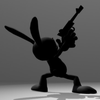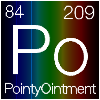System Design:

Schematic:


Component List:
- Arduino Compatible Nano V3.0

- PowerBoost 500 Basic

- Oled Display Module

- 3.7 volt - 180mAh 45C Lipo

- HC-05 Wireless Bluetooth Serial Transceiver

- micro-speaker

- Common anode RGB LED
This project connects to networks through the bluetooth module. All the project files are open and available online.
 Tony E. Nazzal
Tony E. Nazzal



















 Daphne
Daphne

 Tahmid
Tahmid
 svofski
svofski
Hello good night your project is very nice and interesting, a different configuration could be using an Arduino Pro mini 3.3v but to program it is something more complicated by the ftdi you will reduce much the cost and consumption also of your whole device comparing it with an Arduino mega, then you could use the HC-08 modules that are very low power consumption (BLE), and the distance signal is much greater than the traditional HC-05/06 https://articulo.mercadolibre.com.ar/ MLA-709190112-modulo-hc-08-bluetooth-40-ble-arduino-transceptor-gtia-_JM? Quantity = 1, you have placed a new screen proposal in your references and I will attach another one so you can see if you did not know about her https://www.youtube.com/watch?v=G2MtI7asLcA, I would like later if it is possible more information about the optics that you used so I read these using a prism and a lens, you could place some link of references on both and if possible the graphic file that you published to make some tests with some animation ( cyber_99x@hotmail.com )